VidThreeNorth
No longer a newbie, moving up!
- Joined
- Oct 21, 2016
- Messages
- 1,501
- Reaction score
- 421
- Can others edit my Photos
- Photos NOT OK to edit
"Olympus Digital" Zuiko 14-54mm F2.8-3.5 zoom, First Use
Olympus "MMF-3" 43 to M43 adapter
Olympus OM-D E-M10
Monopod
[I had originally planned to test this lens at least twice before posting anything, but I am running short of disc space again and decided that the files from this test could be "moved to storage" sooner rather than later. So I'm writing up this much for now.]
Looking at all my equipment as of the beginning of March, 2019, I did not feel that I had much that rose above "entry level" in either image quality or other capabilities. Specifically, my general lack of low light optics meant that I was to that extent, restricted to sunny day photography. Only my dedicated camcorders could be counted on for use in available light indoors, and they would often give up quality in such situations.
I have a couple of primes in this range, but I did not expect to find a good quality auto-focus zoom brighter than F3.5 for any of my cameras. In a near miracle, I found a Zuiko "4:3" 14-54mm F2.8-3.5 zoom. This is only a "near" miracle. The "4:3" format is the DSLR predecessor of the "Micro 4:3" ("M43") system. That means it is NOT a native M43 system lens and needs an adapter, which is always, to a degree, a step into the unknown.
History:
The Zuiko 14-54mm F2.8-3.5 debuted in 2003 with the first "4:3" camera and like the camera itself, was a "Halo" product aimed at professionals and pro-sumers. During the run of "4:3" cameras, none of the bodies exceeded 12MP, which is where the "Micro 4:3" cameras started. All indications were that this lens, and probably the whole lens lineup, were capable of better.
In 2008, Olympus updated the lens with their "II" version. From what information I could find, there is no optical difference between the two lenses. Both are 15 elements in 11 groups with 3 aspherical glass elements. The new lens had a new drive system. The description sounds like a "linear motor", but DPreview.com lists it as a "micro-motor". The new drive was intended to combine with a new version of the focussing system for quicker focussing, which means the the control method and perhaps including the control signals, must have changed. I have not looked for more detailed information about this. Also, the 7 blade aperture (same number in both lenses) was rounded, so if you see the results of both lenses, you might be able to tell the difference by looking at bokeh. Otherwise, I expect identical performance.
DPreview.com has three sample pictures from the "II" version taken on the OM-D E-M1 (16MP). The "best" picture is the Post Office at:
"Olympus OM-D EM-1 preview samples"
This shows "perfect" linearity. I am not sure how perfect the lens itself is. I think there is in-body correction.
Not Perfect Compatibility
I was looking forward to try this lens on my Yi-M1 with its 20MP sensor. Unfortunately, the body did not work with the lens through the MMF-3 adapter. The combination failed completely. The body identified "no lens". The focus would not respond -- even manually, and the aperture also failed. This leaves open a number of questions:
Would the "II" version work through the "MMF-3" adapter?
Would either lens work using a "Panasonic" adapter?
I tried the lens and adapter on my Lumix GF-3 and it worked properly, so it seems likely that it will work on the rest of the Panasonic line, including their recent 20MP bodies, so we might yet see how the good the lens' optics perform at that level.
[2019-05-19 23:18 NOTE: I recently found out that support for these Olympus 4:3 lenses is NOT consistent on all Panasonic M4:3 bodies. See reply #9 below.]
[Also] be aware that if you buy a M4:3 camera other than Olympus or Panasonic, you might run into this problem.
More Random Specs:
Diameter: 74 mm (2.89″)
Filter thread: 67 mm
Length: 87 mm (3.43″)
Weight: 435 g (0.96 lb)
Environmental Sealing: Yes
Colour: Black
Zoom method: Rotary (extending)
Hood supplied: Yes
Testing:
I would have preferred to have tested it on a 20MP body, but the only one I have is the Yi-M1, so this test was a full Olympus setup using my E-M10 body and the MMF-3 adapter, and my monopod. The temperature was above freezing, but breezy. The sky was mixed sun and clouds, with about 50% coverage while I was out.
Handling:
Focussing:
Manual focus works about as well as my Olympus 40-150mm F4-5.6 M4:3 zoom. I did not try it much, and deliberately did not take any manually focussed pictures in this set. When I do testing, I try to limit my tests so I can come to specific conclusions. Auto-focus takes longer than my 40-150mm zoom, but I am not sure whether it is faster than my 18-55mm A-mount zoom on my a5000. They work very differently. Mostly, the Zuiko zoom has a brief pause, then moves quickly to near the focus, and then slows down to a crawl till it finds focus. Occasionally it has to "restart" the processes. If the focus is close, then sometimes it will just "crawl" a bit and get it right. Focussing can take from a couple of seconds to around ten seconds. I might come to a more definite conclusion someday, after a lot more use.
Olympus warns that adapted lenses focus slower than the lens working on its native body. The Sony A-mount to E-mount adapters have similar issues. I have generally accepted this limitation, but lately, "not so much". Canon and Nikon faced the same issues adapting their lenses, and the reports are that there is no such focussing speed difference when adapting their DSLR lenses to their new Mirror-less ILC bodies.
Other Handling:
There is not much I can say so far. I like the zoom control. Since the main lens moves progressively in a single direction while zooming, the control does not have a change in torque during zooming, which means that I might have a good "slow zoom" for video. The ~3.8:1 zoom ratio might make this useful. I have not yet looked at focus breathing nor focus shifting while zooming ("par focus").
Yes, the lens is heavy, but I do not find it excessive. I do wish that the MMF-3 adapter had a tripod mount, but the thickness of the adapter is not as great as the Canon, Nikon and Sony equivalents, so structurally, it might not have been as good an idea.
Results:
I had intended to find out what the maximum apertures were through the zoom range, but the information was not provided in the EXIF data. Instead, the lens always reported the max. aperture as "2.97265625" (roughly "2.8"). This is my second Olympus zoom and both of them report the maximum aperture as the overall maximum of the lens. I am starting to think that this is just Olympus' interpretation of what this value should be. All other zoom lenses that I have tried report the maximum aperture at that particular focal length, which is more useful information. Olympus should "correct" this.
I have only looked at three of the ORFs (raw files) so far. These were at 14mm, 19mm and 54mm. I was looking for lens linearity, and general performance issues. I have no current intentions of looking further at ORFs from this batch of files.
Due to the subject matter, I cannot tell much about corner sharpness or field flatness. I need to find a brick wall for that. The only files I have from 14mm show soft corners, but since the corners were much closer to me than the focus point, it is meaningless.
As I noted before, the final pictures I made from the ORFs show "perfect linearity". I doubt that this is true. It is more likely that Corel PaintShop Pro is applying lens correction based on a header parameter. The program is supposed to turn this off if I chose to bypass lens corrections, and I have tried this before, and the bypass does not seem to work. So I cannot say for certain how linear the lens is. But sharpness and detail off axis is generally "very good" to "excellent" through most focal length, focus distance and aperture combinations. In this group of files, long distances seem to soften the images throughout the zoom range, but this might be the subject matter.
The following are the uploaded images from this test. No sharpening or noise reduction was used for any of these uploaded files. Then again, most of these, including the "detail crops" are based on the camera JPEGs, which used Olympus' standard noise reduction and sharpening. In the files are reduced, only very bad noise or lack of sharpness will show up. Aside from the cropping or resizing only two files have had any adjustments at all (the two created from the ORFs) and I have described the changes.
"P4090022.JPG"
- 54mm, near
2019-04-09 13:14:38
Size: 7,960,080 bytes [JPEG]
Partial EXIF
Program name: Version 1.4
Dimensions 4608 x 3456
Bit depth 24
Resolution unit 2
Color representation sRGB
F-stop f/3.5
Exposure time 1/320 sec.
ISO speed ISO-200
Focal length 54mm
Max aperture 2.97265625
Metering mode: Center Weighted Average
35mm focal length: [108 mm]
"P4090022-1b-rsz1283-C1.jpg"
Conversion from ORF:
White balance "As Shot"
Temperature 5565
Tint 100
- Lens correction "Off"
- note that the Corel output lowered the exposure. This was not an adjustment that I made, however, I preferred the overall appearance, particularly the light coloured rock in the foreground, so I kept it this way.
"P4090022a-Crop1280-C1.JPG"
- Detail crop from Camera JPEG
Crop From: 4607, 511
1280 x 960
The reduction down to 1280 was necessary to maintain the C1 compression without exceeding the 2MB upload limit. I was very happy with the quality of this image, both in the JPEG version and from what I saw in the ORF based version. The lens is definitely sharp.
"P4090023.JPG"
- changed focal length
2019-04-09 13:14:46
Size: 7,798,895 bytes [JPEG]
Partial EXIF:
Program name: Version 1.4
Dimensions 4608 x 3456
Bit depth 24
Resolution unit 2
Color representation sRGB
F-stop f/4
Exposure time 1/320 sec.
ISO speed ISO-200
Focal length 40mm
Max aperture 2.97265625
Metering mode: Center Weighted Average
35mm focal length: [80 mm]
"P4090023a-rsz1440-C1.JPG"
Resize: 1440 x 1080
As noted, this is one of the pictures where I simply changed focal length looking for maximum aperture. That turned out to be a wasted effort, since the EXIF data did not report it. Still, the image quality did not change with the focal length. It remained very sharp and with good detail.
"P4090027.JPG"
- flowing grasses
April 9, 2019, 13:15:22
Size: 7,471,973 bytes [JPEG]
Partial EXIF:
Program name: Version 1.4
Dimensions 4608 x 3456
Bit depth 24
Resolution unit 2
Color representation sRGB
F-stop f/4.5
Exposure time 1/400 sec.
ISO speed ISO-200
Focal length 19mm
Max aperture 2.97265625
Metering mode Center Weighted Average
"P4090027-2d-rsz1243-C1.jpg"
Convert from ORF:
Scenario: "As Shot"
Temperature: 5722
Tint: 100
Highlight Recovery: "Normal"
SmartFix
Overall 28
Shadows 0
Highlights 10
Saturation 21
Focus 0 [44 recommended]
White Balance Yes
Black 6
This file is the only one that I applied corections to exposure, colour balance and saturation. If you compare this with the "detail crop" below, which is based on the camera JPEG, without adjustments, you can see that Corel's "Smart Photo Fix" suggested a warmer and more saturated image, which in this case, I preferred.
Each time I looked at an ORF and compared it to the camera JPEG, I was looking for linear distortion. Either there isn't any, which is unlikely or corrections are already in the ORFs. Probably the latter.
"P4090027a-Crop1280-C1.JPG"
- Detail crop from Camera JPEG
Crop from
4001, 1401
1280 x 960
"P4090041.JPG"
- river tree
April 9, 2019, 13:21:50
Size: 7,940,387 bytes [JPEG]
Partial EXIF:
Program name: Version 1.4
Dimensions 4608 x 3456
Bit depth 24
Resolution unit 2
Color representation sRGB
F-stop f/5
Exposure time 1/500 sec.
ISO speed ISO-200
Focal length 32mm
Max aperture 2.97265625
Metering mode: Center Weighted Average
This is where "sharpening" creates anomalies in a picture. As far as I can tell, I actually focussed too close to myself. I think I was focussed on a batch of bubbles on the water, near the tree, but on my side of it, where there is a small "waterfall". Yet much of the far bank looks sharp. This is probably the result of sharpening being triggered by the contrast.
[2019-04-23 22:30 I have looked at this picture and tried to remember what happened. I think I might have focussed further away than I thought. However, the two seagull shot was definitely focused at the distance of the birds. I actually focussed on the rock between them.]
"P4090041a-rsz1440-C1.JPG"
Resize: 1440 x 1080
"P4090043.JPG"
2 seagulls, [anti-social]
Partial EXIF
Date April 9, 2019, 13:22:24
Size: 7,917,684 bytes [JPEG]
Program name: Version 1.4
Dimensions 4608 x 3456
Bit depth 24
Resolution unit 2
Color representation sRGB
F-stop f/5
Exposure time 1/640 sec.
ISO speed ISO-200
Focal length 54mm
Max aperture 2.97265625
Metering mode: Center Weighted Average
"P4090043a-rsz1440-C1.jpg"
Resize: 1440 x 1080
Similarly, I am focussed on the seagulls, yet the objects on the far bank seem in focus or within the depth of field, and I do not think they should be as sharp as they are. I think sharpening was probably triggered by contrast. Still, the lens is performing quite well overall.
Olympus "MMF-3" 43 to M43 adapter
Olympus OM-D E-M10
Monopod
[I had originally planned to test this lens at least twice before posting anything, but I am running short of disc space again and decided that the files from this test could be "moved to storage" sooner rather than later. So I'm writing up this much for now.]
Looking at all my equipment as of the beginning of March, 2019, I did not feel that I had much that rose above "entry level" in either image quality or other capabilities. Specifically, my general lack of low light optics meant that I was to that extent, restricted to sunny day photography. Only my dedicated camcorders could be counted on for use in available light indoors, and they would often give up quality in such situations.
I have a couple of primes in this range, but I did not expect to find a good quality auto-focus zoom brighter than F3.5 for any of my cameras. In a near miracle, I found a Zuiko "4:3" 14-54mm F2.8-3.5 zoom. This is only a "near" miracle. The "4:3" format is the DSLR predecessor of the "Micro 4:3" ("M43") system. That means it is NOT a native M43 system lens and needs an adapter, which is always, to a degree, a step into the unknown.
History:
The Zuiko 14-54mm F2.8-3.5 debuted in 2003 with the first "4:3" camera and like the camera itself, was a "Halo" product aimed at professionals and pro-sumers. During the run of "4:3" cameras, none of the bodies exceeded 12MP, which is where the "Micro 4:3" cameras started. All indications were that this lens, and probably the whole lens lineup, were capable of better.
In 2008, Olympus updated the lens with their "II" version. From what information I could find, there is no optical difference between the two lenses. Both are 15 elements in 11 groups with 3 aspherical glass elements. The new lens had a new drive system. The description sounds like a "linear motor", but DPreview.com lists it as a "micro-motor". The new drive was intended to combine with a new version of the focussing system for quicker focussing, which means the the control method and perhaps including the control signals, must have changed. I have not looked for more detailed information about this. Also, the 7 blade aperture (same number in both lenses) was rounded, so if you see the results of both lenses, you might be able to tell the difference by looking at bokeh. Otherwise, I expect identical performance.
DPreview.com has three sample pictures from the "II" version taken on the OM-D E-M1 (16MP). The "best" picture is the Post Office at:
"Olympus OM-D EM-1 preview samples"
This shows "perfect" linearity. I am not sure how perfect the lens itself is. I think there is in-body correction.
Not Perfect Compatibility
I was looking forward to try this lens on my Yi-M1 with its 20MP sensor. Unfortunately, the body did not work with the lens through the MMF-3 adapter. The combination failed completely. The body identified "no lens". The focus would not respond -- even manually, and the aperture also failed. This leaves open a number of questions:
Would the "II" version work through the "MMF-3" adapter?
Would either lens work using a "Panasonic" adapter?
I tried the lens and adapter on my Lumix GF-3 and it worked properly, so it seems likely that it will work on the rest of the Panasonic line, including their recent 20MP bodies, so we might yet see how the good the lens' optics perform at that level.
[2019-05-19 23:18 NOTE: I recently found out that support for these Olympus 4:3 lenses is NOT consistent on all Panasonic M4:3 bodies. See reply #9 below.]
[Also] be aware that if you buy a M4:3 camera other than Olympus or Panasonic, you might run into this problem.
More Random Specs:
Diameter: 74 mm (2.89″)
Filter thread: 67 mm
Length: 87 mm (3.43″)
Weight: 435 g (0.96 lb)
Environmental Sealing: Yes
Colour: Black
Zoom method: Rotary (extending)
Hood supplied: Yes
Testing:
I would have preferred to have tested it on a 20MP body, but the only one I have is the Yi-M1, so this test was a full Olympus setup using my E-M10 body and the MMF-3 adapter, and my monopod. The temperature was above freezing, but breezy. The sky was mixed sun and clouds, with about 50% coverage while I was out.
Handling:
Focussing:
Manual focus works about as well as my Olympus 40-150mm F4-5.6 M4:3 zoom. I did not try it much, and deliberately did not take any manually focussed pictures in this set. When I do testing, I try to limit my tests so I can come to specific conclusions. Auto-focus takes longer than my 40-150mm zoom, but I am not sure whether it is faster than my 18-55mm A-mount zoom on my a5000. They work very differently. Mostly, the Zuiko zoom has a brief pause, then moves quickly to near the focus, and then slows down to a crawl till it finds focus. Occasionally it has to "restart" the processes. If the focus is close, then sometimes it will just "crawl" a bit and get it right. Focussing can take from a couple of seconds to around ten seconds. I might come to a more definite conclusion someday, after a lot more use.
Olympus warns that adapted lenses focus slower than the lens working on its native body. The Sony A-mount to E-mount adapters have similar issues. I have generally accepted this limitation, but lately, "not so much". Canon and Nikon faced the same issues adapting their lenses, and the reports are that there is no such focussing speed difference when adapting their DSLR lenses to their new Mirror-less ILC bodies.
Other Handling:
There is not much I can say so far. I like the zoom control. Since the main lens moves progressively in a single direction while zooming, the control does not have a change in torque during zooming, which means that I might have a good "slow zoom" for video. The ~3.8:1 zoom ratio might make this useful. I have not yet looked at focus breathing nor focus shifting while zooming ("par focus").
Yes, the lens is heavy, but I do not find it excessive. I do wish that the MMF-3 adapter had a tripod mount, but the thickness of the adapter is not as great as the Canon, Nikon and Sony equivalents, so structurally, it might not have been as good an idea.
Results:
I had intended to find out what the maximum apertures were through the zoom range, but the information was not provided in the EXIF data. Instead, the lens always reported the max. aperture as "2.97265625" (roughly "2.8"). This is my second Olympus zoom and both of them report the maximum aperture as the overall maximum of the lens. I am starting to think that this is just Olympus' interpretation of what this value should be. All other zoom lenses that I have tried report the maximum aperture at that particular focal length, which is more useful information. Olympus should "correct" this.
I have only looked at three of the ORFs (raw files) so far. These were at 14mm, 19mm and 54mm. I was looking for lens linearity, and general performance issues. I have no current intentions of looking further at ORFs from this batch of files.
Due to the subject matter, I cannot tell much about corner sharpness or field flatness. I need to find a brick wall for that. The only files I have from 14mm show soft corners, but since the corners were much closer to me than the focus point, it is meaningless.
As I noted before, the final pictures I made from the ORFs show "perfect linearity". I doubt that this is true. It is more likely that Corel PaintShop Pro is applying lens correction based on a header parameter. The program is supposed to turn this off if I chose to bypass lens corrections, and I have tried this before, and the bypass does not seem to work. So I cannot say for certain how linear the lens is. But sharpness and detail off axis is generally "very good" to "excellent" through most focal length, focus distance and aperture combinations. In this group of files, long distances seem to soften the images throughout the zoom range, but this might be the subject matter.
The following are the uploaded images from this test. No sharpening or noise reduction was used for any of these uploaded files. Then again, most of these, including the "detail crops" are based on the camera JPEGs, which used Olympus' standard noise reduction and sharpening. In the files are reduced, only very bad noise or lack of sharpness will show up. Aside from the cropping or resizing only two files have had any adjustments at all (the two created from the ORFs) and I have described the changes.
"P4090022.JPG"
- 54mm, near
2019-04-09 13:14:38
Size: 7,960,080 bytes [JPEG]
Partial EXIF
Program name: Version 1.4
Dimensions 4608 x 3456
Bit depth 24
Resolution unit 2
Color representation sRGB
F-stop f/3.5
Exposure time 1/320 sec.
ISO speed ISO-200
Focal length 54mm
Max aperture 2.97265625
Metering mode: Center Weighted Average
35mm focal length: [108 mm]
"P4090022-1b-rsz1283-C1.jpg"
Conversion from ORF:
White balance "As Shot"
Temperature 5565
Tint 100
- Lens correction "Off"
- note that the Corel output lowered the exposure. This was not an adjustment that I made, however, I preferred the overall appearance, particularly the light coloured rock in the foreground, so I kept it this way.
"P4090022a-Crop1280-C1.JPG"
- Detail crop from Camera JPEG
Crop From: 4607, 511
1280 x 960
The reduction down to 1280 was necessary to maintain the C1 compression without exceeding the 2MB upload limit. I was very happy with the quality of this image, both in the JPEG version and from what I saw in the ORF based version. The lens is definitely sharp.
"P4090023.JPG"
- changed focal length
2019-04-09 13:14:46
Size: 7,798,895 bytes [JPEG]
Partial EXIF:
Program name: Version 1.4
Dimensions 4608 x 3456
Bit depth 24
Resolution unit 2
Color representation sRGB
F-stop f/4
Exposure time 1/320 sec.
ISO speed ISO-200
Focal length 40mm
Max aperture 2.97265625
Metering mode: Center Weighted Average
35mm focal length: [80 mm]
"P4090023a-rsz1440-C1.JPG"
Resize: 1440 x 1080
As noted, this is one of the pictures where I simply changed focal length looking for maximum aperture. That turned out to be a wasted effort, since the EXIF data did not report it. Still, the image quality did not change with the focal length. It remained very sharp and with good detail.
"P4090027.JPG"
- flowing grasses
April 9, 2019, 13:15:22
Size: 7,471,973 bytes [JPEG]
Partial EXIF:
Program name: Version 1.4
Dimensions 4608 x 3456
Bit depth 24
Resolution unit 2
Color representation sRGB
F-stop f/4.5
Exposure time 1/400 sec.
ISO speed ISO-200
Focal length 19mm
Max aperture 2.97265625
Metering mode Center Weighted Average
"P4090027-2d-rsz1243-C1.jpg"
Convert from ORF:
Scenario: "As Shot"
Temperature: 5722
Tint: 100
Highlight Recovery: "Normal"
SmartFix
Overall 28
Shadows 0
Highlights 10
Saturation 21
Focus 0 [44 recommended]
White Balance Yes
Black 6
This file is the only one that I applied corections to exposure, colour balance and saturation. If you compare this with the "detail crop" below, which is based on the camera JPEG, without adjustments, you can see that Corel's "Smart Photo Fix" suggested a warmer and more saturated image, which in this case, I preferred.
Each time I looked at an ORF and compared it to the camera JPEG, I was looking for linear distortion. Either there isn't any, which is unlikely or corrections are already in the ORFs. Probably the latter.
"P4090027a-Crop1280-C1.JPG"
- Detail crop from Camera JPEG
Crop from
4001, 1401
1280 x 960
"P4090041.JPG"
- river tree
April 9, 2019, 13:21:50
Size: 7,940,387 bytes [JPEG]
Partial EXIF:
Program name: Version 1.4
Dimensions 4608 x 3456
Bit depth 24
Resolution unit 2
Color representation sRGB
F-stop f/5
Exposure time 1/500 sec.
ISO speed ISO-200
Focal length 32mm
Max aperture 2.97265625
Metering mode: Center Weighted Average
This is where "sharpening" creates anomalies in a picture. As far as I can tell, I actually focussed too close to myself. I think I was focussed on a batch of bubbles on the water, near the tree, but on my side of it, where there is a small "waterfall". Yet much of the far bank looks sharp. This is probably the result of sharpening being triggered by the contrast.
[2019-04-23 22:30 I have looked at this picture and tried to remember what happened. I think I might have focussed further away than I thought. However, the two seagull shot was definitely focused at the distance of the birds. I actually focussed on the rock between them.]
"P4090041a-rsz1440-C1.JPG"
Resize: 1440 x 1080
"P4090043.JPG"
2 seagulls, [anti-social]
Partial EXIF
Date April 9, 2019, 13:22:24
Size: 7,917,684 bytes [JPEG]
Program name: Version 1.4
Dimensions 4608 x 3456
Bit depth 24
Resolution unit 2
Color representation sRGB
F-stop f/5
Exposure time 1/640 sec.
ISO speed ISO-200
Focal length 54mm
Max aperture 2.97265625
Metering mode: Center Weighted Average
"P4090043a-rsz1440-C1.jpg"
Resize: 1440 x 1080
Similarly, I am focussed on the seagulls, yet the objects on the far bank seem in focus or within the depth of field, and I do not think they should be as sharp as they are. I think sharpening was probably triggered by contrast. Still, the lens is performing quite well overall.
Attachments
-
 P4090022-1b-rsz1283-C1.webp325.1 KB · Views: 476
P4090022-1b-rsz1283-C1.webp325.1 KB · Views: 476 -
 P4090022a-Crop1280-C1.webp302.9 KB · Views: 422
P4090022a-Crop1280-C1.webp302.9 KB · Views: 422 -
 P4090023a-rsz1440-C1.webp582.9 KB · Views: 409
P4090023a-rsz1440-C1.webp582.9 KB · Views: 409 -
 P4090027-2d-rsz1243-C1.webp434.8 KB · Views: 460
P4090027-2d-rsz1243-C1.webp434.8 KB · Views: 460 -
 P4090041a-rsz1440-C1.webp530.3 KB · Views: 418
P4090041a-rsz1440-C1.webp530.3 KB · Views: 418 -
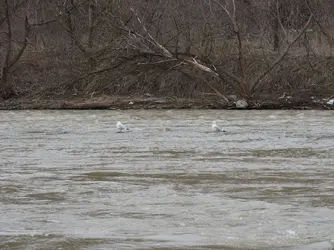 P4090043a-rsz1440-C1.webp528.4 KB · Views: 430
P4090043a-rsz1440-C1.webp528.4 KB · Views: 430 -
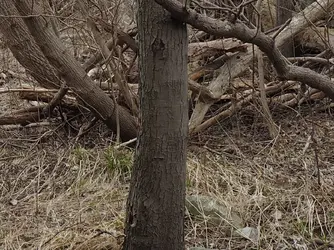 P4090027a-Crop1280-C1.webp494.2 KB · Views: 460
P4090027a-Crop1280-C1.webp494.2 KB · Views: 460
Last edited:




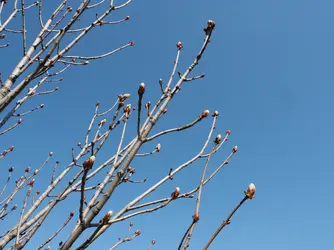
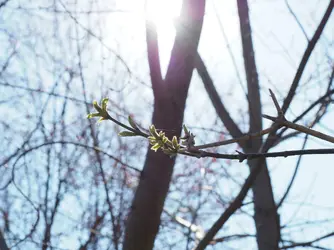





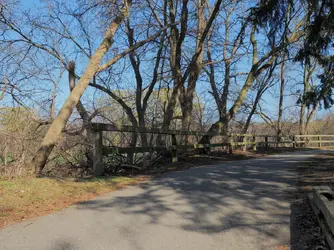

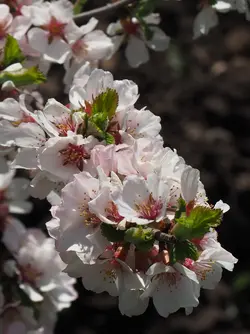
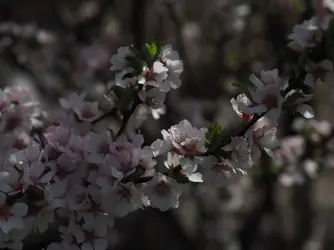
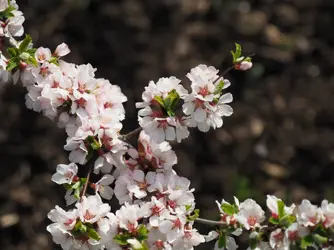


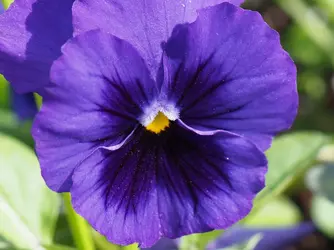




![[No title]](/data/xfmg/thumbnail/37/37540-73002ccb910b97978bc38658622a34d3.jpg?1734170695)






